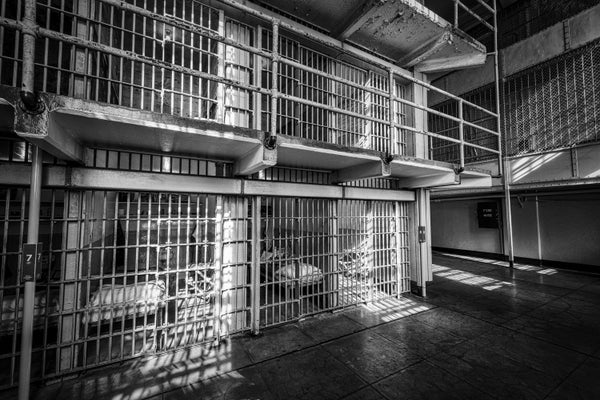One person is sentenced to state or federal prison every 90 seconds in the United States, amounting to almost 420,000 per year. The U.S. has the highest incarceration rate in the world. We incarcerate for multiple reasons, including justice and punishment, but one of the main justifications is public safety. Putting individuals convicted of crimes, especially violent crimes, in prison is thought to make the rest of us safer.
But how much safety does all this imprisonment actually buy us? A study I recently published with colleagues shows the answer is very little, especially in the long-term.
There are good reasons to think prisons might prevent crime. The experience of imprisonment could deter someone from committing crimes to avoid prison in the future. Prison might provide opportunities for rehabilitation, such as drug and alcohol treatment, education, or counseling. And, at the very least, someone who is in prison cannot commit a crime in the community, an effect criminologists call “incapacitation.”
On supporting science journalism
If you're enjoying this article, consider supporting our award-winning journalism by subscribing. By purchasing a subscription you are helping to ensure the future of impactful stories about the discoveries and ideas shaping our world today.
Yet there are also good reasons to believe that prisons might actually increase crime. The harsh prison environment could exacerbate mental health problems, make people more prone to aggression, or make them cynical and distrustful of the legal system. Prisons could isolate prisoners from friends and family who might help them find jobs eventually. Or prisoners may learn from other prisoners how to be better criminals.
To examine how prison affects violent crime, our study compared people sentenced to prison to those sentenced to probation supervision in the community, using data on all individuals sentenced for a felony in Michigan between 2003 and 2006. They were followed through 2015 to track convictions for violent crimes.
The study focused on people who had committed a violent crime and were eligible for both prison or probation sentences. Such people were typically convicted of crimes like robbery or assault (individuals convicted of more serious violent crimes like rape or murder are generally not eligible for probation).
Determining whether differences in future violent offending are a result of prison itself is challenging, however. Those who are sentenced to prison are probably more likely than those sentenced to probation to commit a violent crime in the future, even if they had not been sentenced to prison.
To overcome this challenge, the study used the random assignment of criminal defendants to judges to mimic a randomized experiment. Different judges are more harsh or lenient in their sentencing, even within the same county courthouse. The study compared defendants randomly assigned to harsher judges to those who were randomly assigned to more lenient judges.
The study found that sentencing someone to prison had no effect on their chances of being convicted of a violent crime within five years of being released from prison. This means that prison has no preventative effect on violence in the long term among people who might have been sentenced to probation.
It also found a preventative “incapacitation” effect in the short term, during the time when prisoners were still in prison, but this effect is smaller than we typically assume. Preventing one person who was previously convicted of a violent crime from committing a new violent crime within five years of their sentence requires imprisoning 16 such individuals.
These findings are important for two reasons. First, imprisoning just one person costs tens of thousands of dollars per year. The short-term and small preventative effect of prison means those dollars could be better spent on other violence prevention or public safety strategies.
Second, the high costs of prison combined with concerns about the negative collateral consequences for prisoners, their families, and communities have prompted renewed efforts in states around the country to reduce imprisonment. Yet despite the fact that over half of prison inmates were convicted of a violent crime, most criminal justice reforms exclude those with violent pasts. The results from this study mean that many people convicted of crimes like robbery and assault could be sentenced to probation rather than prison with little impact on public safety.
